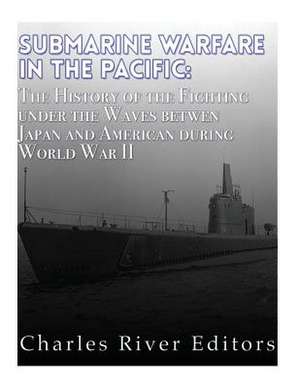Submarine Warfare in the Pacific
Autor Charles River Editorsen Limba Engleză Paperback
Preț: 57.35 lei
Nou
Puncte Express: 86
Preț estimativ în valută:
10.97€ • 11.46$ • 9.08£
10.97€ • 11.46$ • 9.08£
Carte tipărită la comandă
Livrare economică 05-19 aprilie
Preluare comenzi: 021 569.72.76
Specificații
ISBN-13: 9781984957634
ISBN-10: 1984957635
Pagini: 76
Dimensiuni: 216 x 279 x 4 mm
Greutate: 0.2 kg
ISBN-10: 1984957635
Pagini: 76
Dimensiuni: 216 x 279 x 4 mm
Greutate: 0.2 kg
